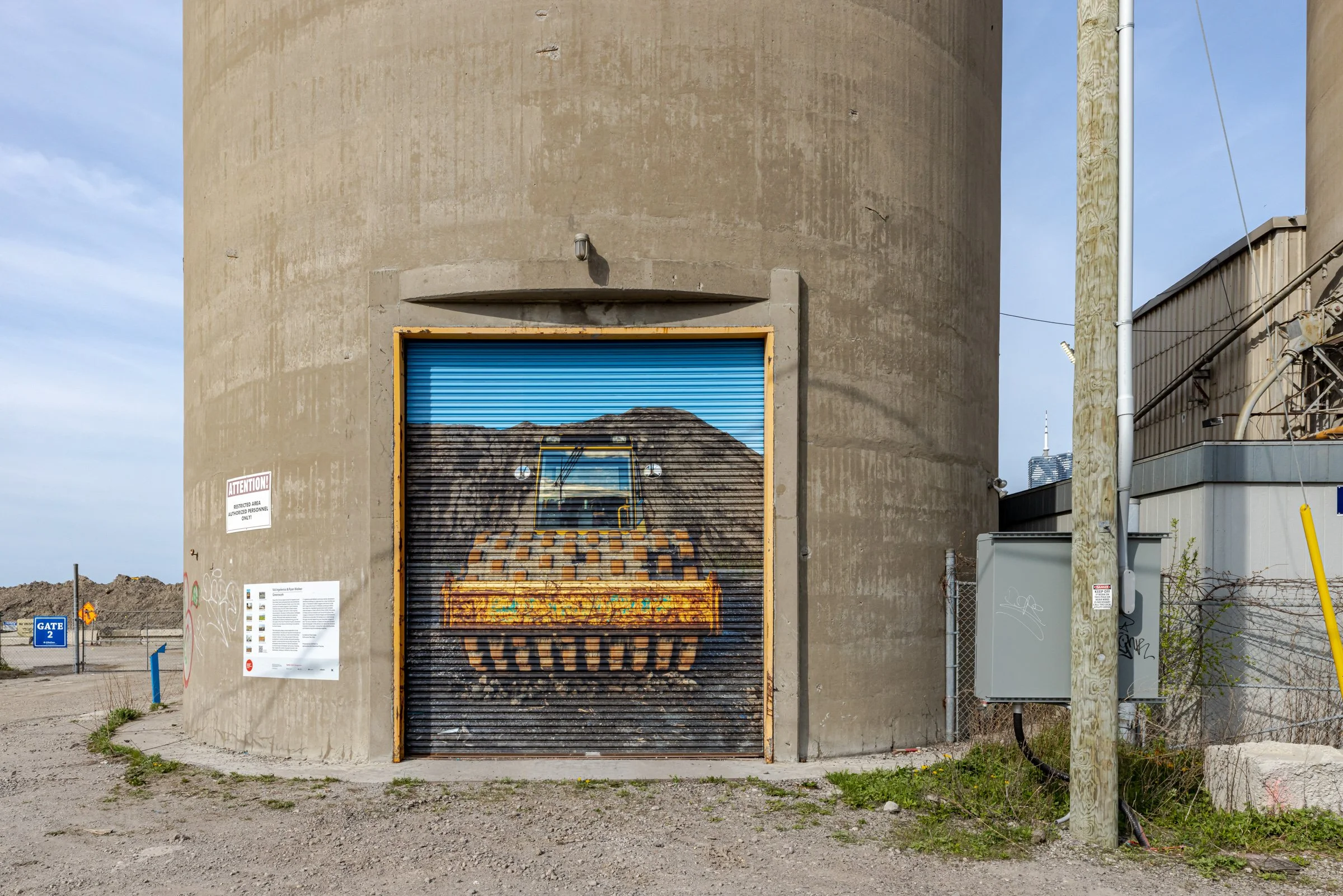
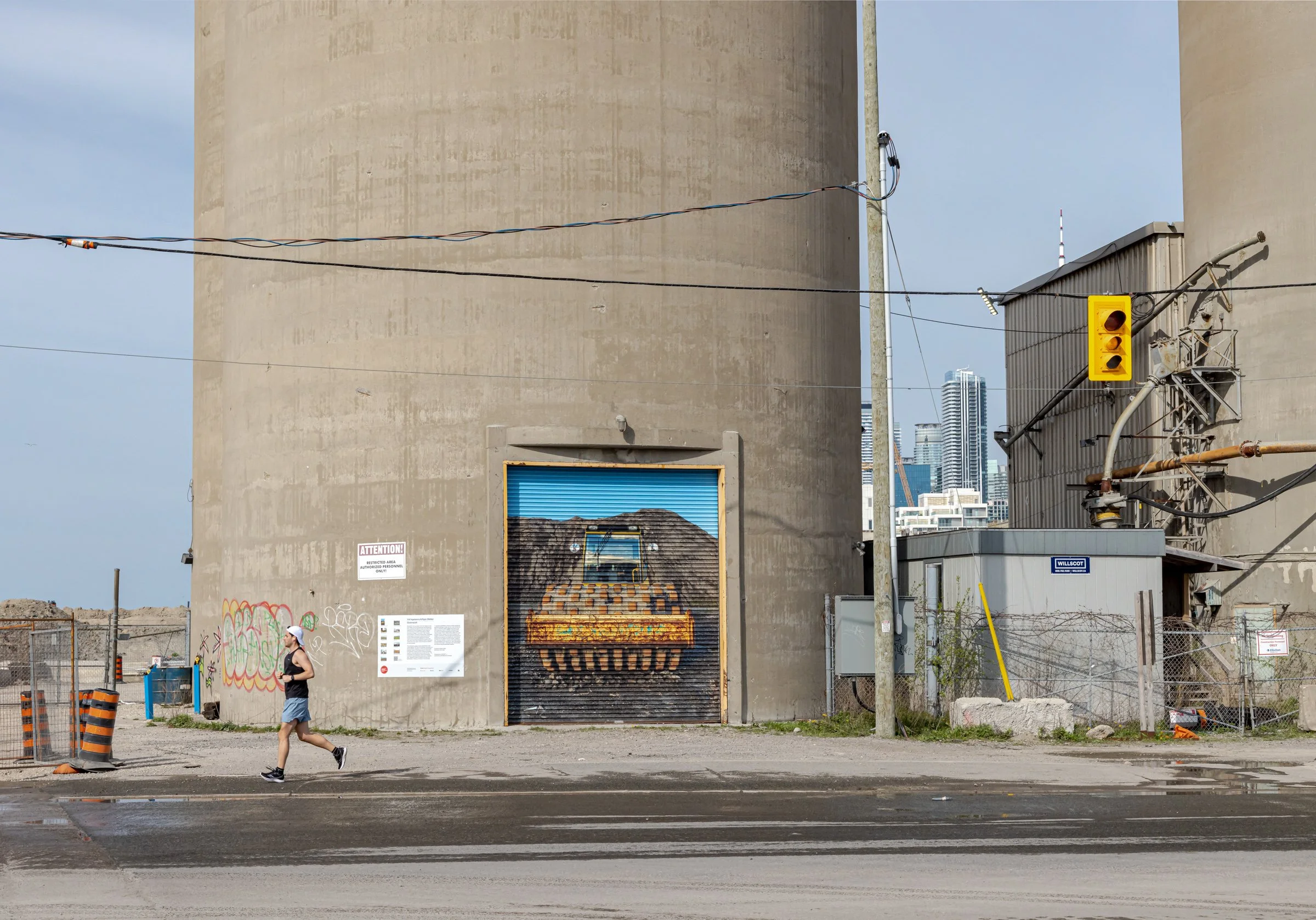
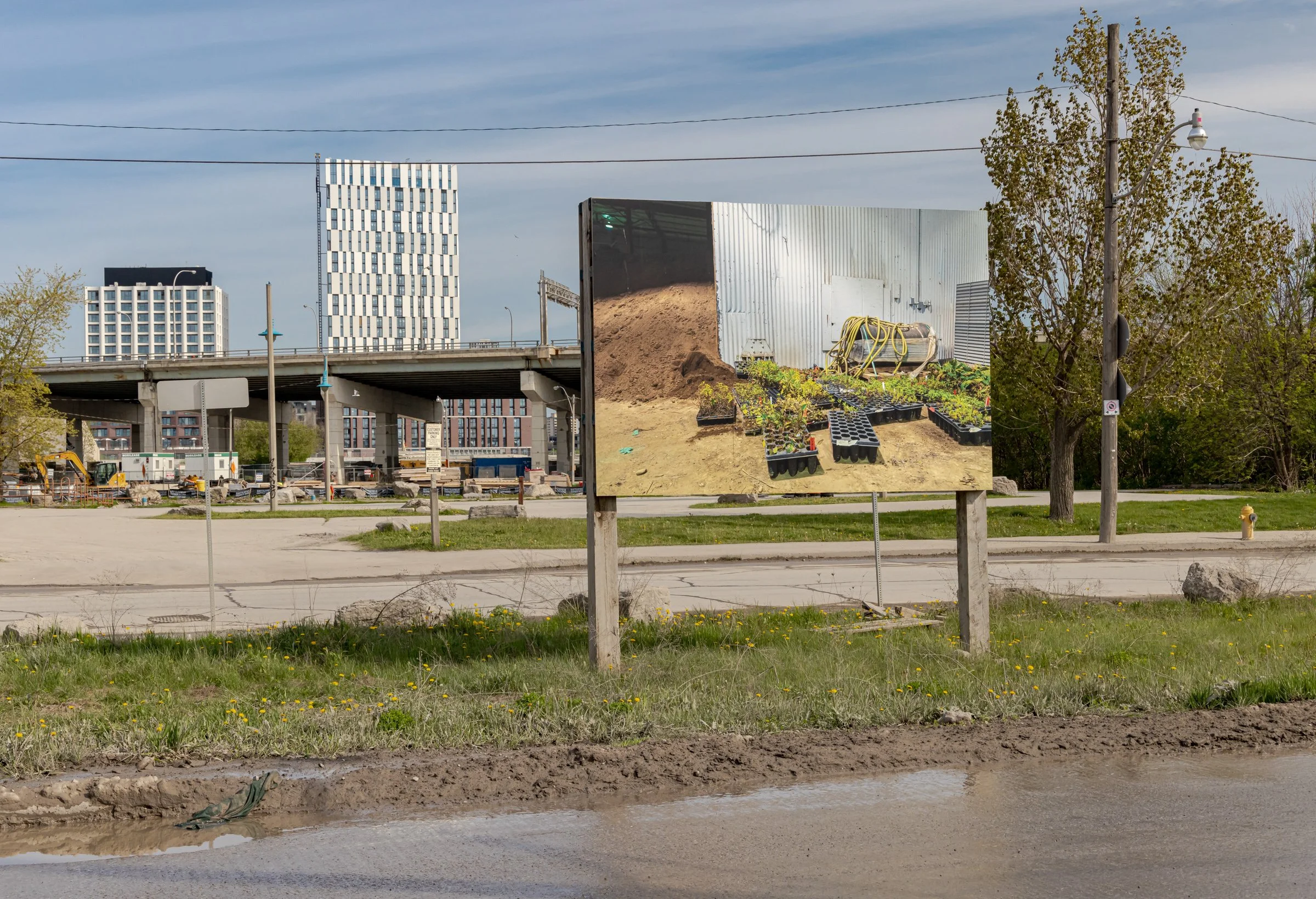

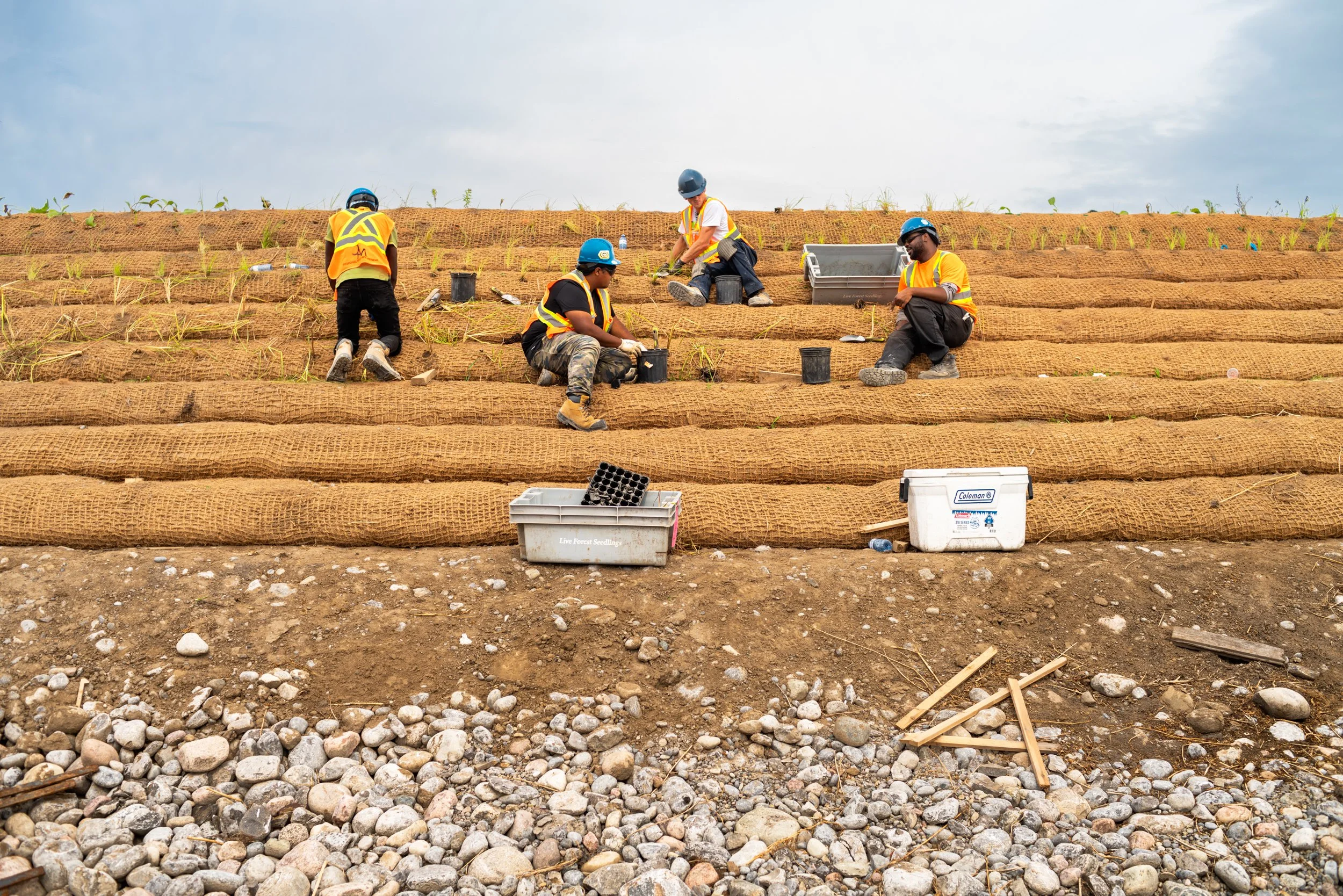


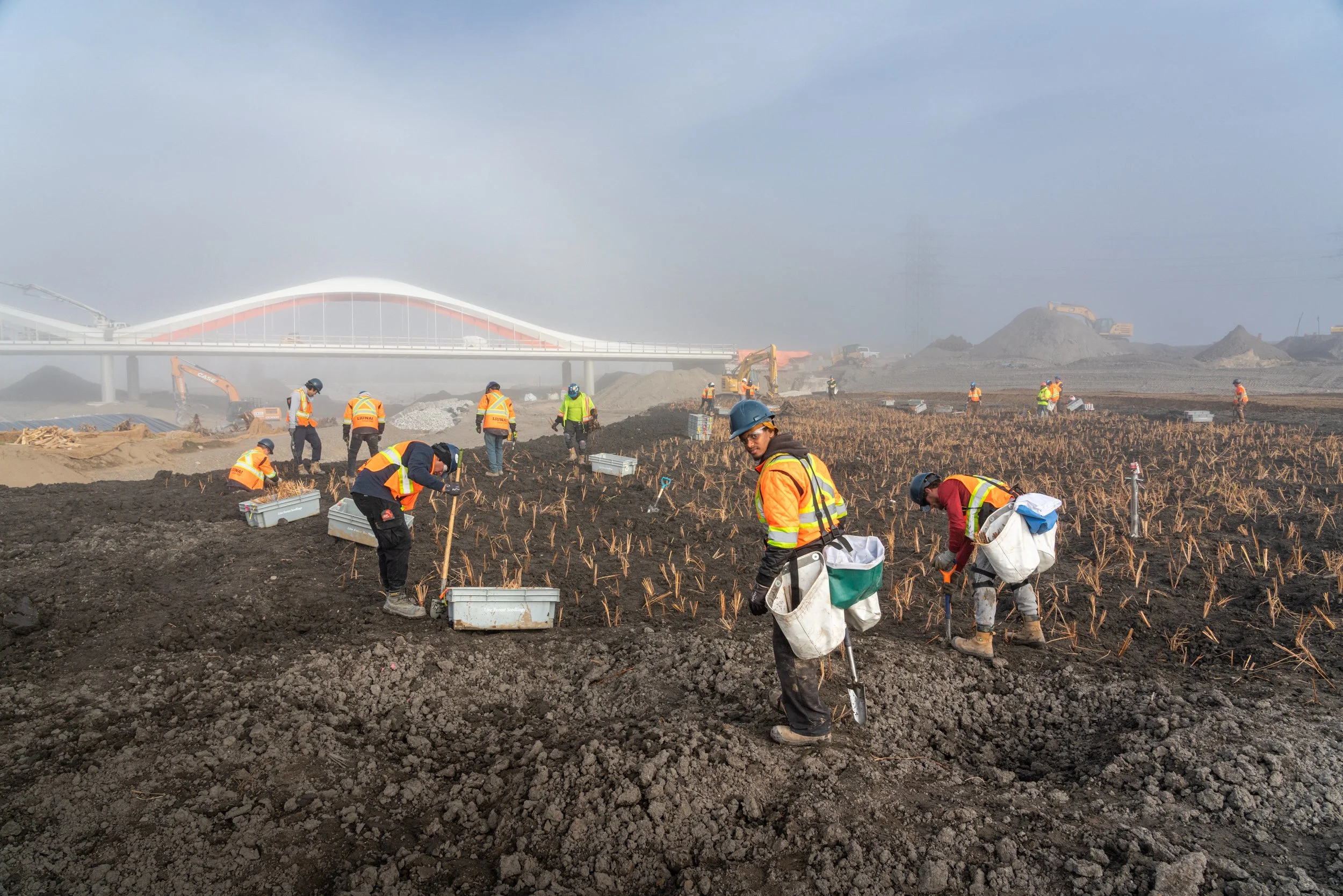
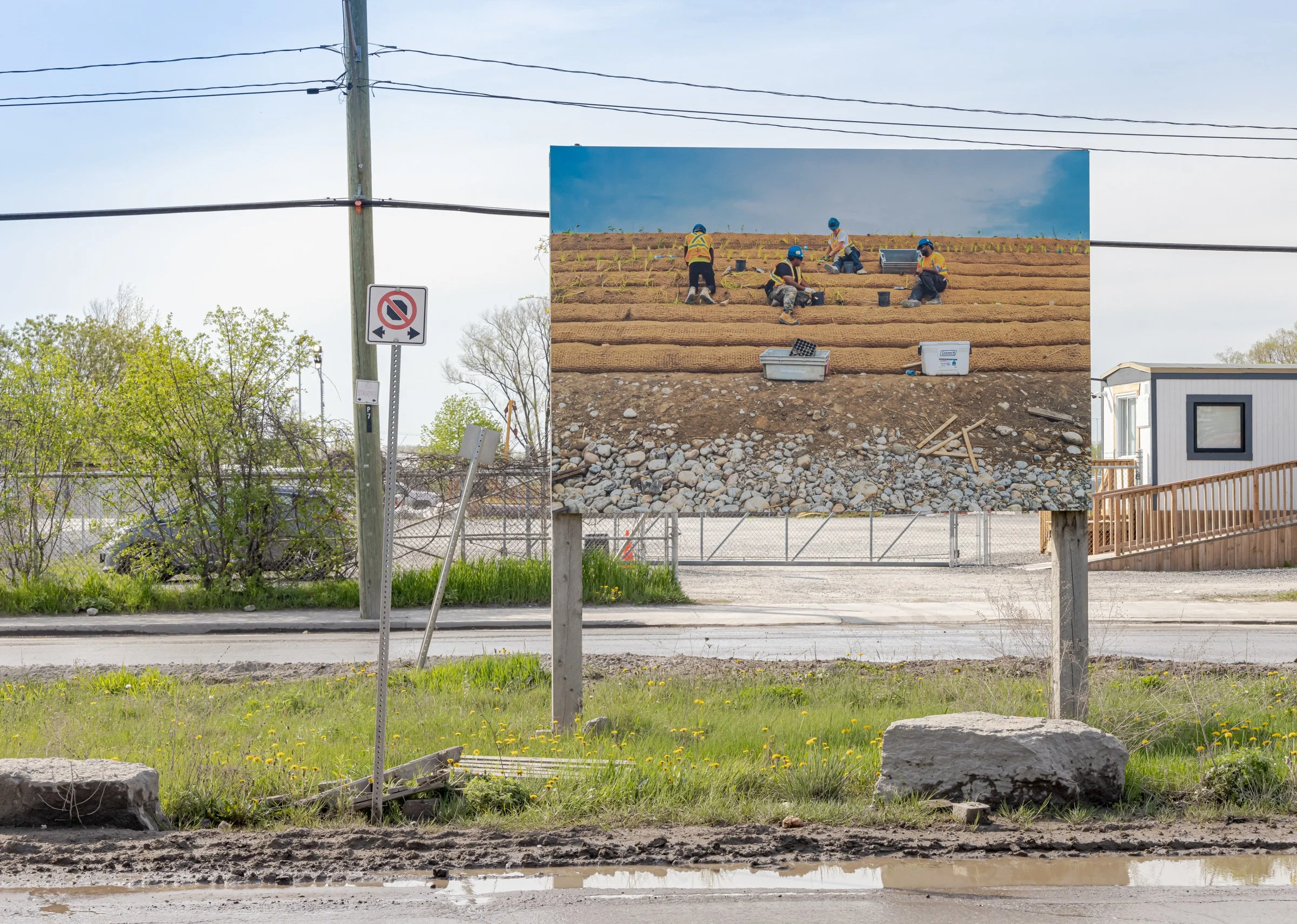



GREENWORK
Ryan Walker / Vid Ingelevics. Toronto Port Lands, 312 Cherry St & Villiers St Median, Toronto, CAN. (06/01/2023 - present)
Installation Photos: Ryan Walker & Toni Hafkenscheid. Courtesy of Scotiabank CONTACT Photography Festival.
Since 2019, Toronto-based artists Vid Ingelevics and Ryan Walker have photographically documented the Port Lands Flood Protection Project, one of the most ambitious civil works programs in North America. Presented along Toronto’s Villiers Street median, this series of images—the fourth in their ongoing documentation—focuses on the social nature of labour and the greening process, as well as the juxtaposition between manual labour and heavy machinery.
Photographed throughout 2022, the images in Greenwork reveal the sheer scale of planting initiated by the Port Lands Flood Protection Project. It also marks a substantial shift in labour strategies, from the heavily-mechanized operation of the project’s early years to a more intimate, manual labour approach in recent phases of the massive undertaking. In Ingelevics and Walker’s previous series, excavators demolish buildings to make way for a new riverbed, as seen in Framework (2020); diggers and dump trucks shift huge piles of soil, depicted in A Mobile Landscape (2021); and major bio-engineering practices build a complex new ecology, as shown in How to Build a River (2022).
Unlike those images, Greenwork hones in on the details—ladders, hand tools, and tree pouches; boxes of soft grasses and seedlings; and workers bent over, carefully planting saplings, sorting species, and discarding empty pots and trays. This stage in the landscaping process is heavily dependent on the careful attention, fine skill, and requisite coordination in the execution of manual labour and, as such, the images convey the social nature of the work. Groups of labourers are depicted in candid moments, sitting or standing together, conversing while they pot, dig, and plant. In a series of tableaux, the photographs show the connections and interactions within groups, and how despite the volume of people involved in the landscaping process, an intimacy is inherent to their labour.
More specifically, Hydroseeded Landscape shows the beginning of the greening process, where grass seed is sprayed through a hand-held hose to cover vast areas of now-fertile land. The process foreshadows how radically different the grey-brown, moon-like site will look once this greening stage is finished.
In Pinewood Studios—the only indoor shot—soil spills from the old studio door onto what used to be Commissioners Street. The building is now used to store earth and other natural materials for future parks. With fittingly cinematic lighting and a corrugated steel backdrop, the photograph is a still-life of tiny plants in plastic starting trays, waiting to be carried onsite—a testament to the liminal spaces that remain. Other photographs such as Stepped River Bank or Planting #2 show the enormous scale of the landscaping effort, with scenes appearing almost agrarian, akin to reforestation initiatives in Northern Ontario or British Columbia.
Adjacent to the images presented along the median, the door of the defunct Essroc Cement silo at the intersection of Cherry and Villiers Streets features an image of a sheepsfoot roller. The machine functions as a foil to the manual labour represented on the billboards, and as an allusion to the site’s heavily-mechanized industrial past. In other photographs, the meticulous manual work in each foreground contrasts with the hulking, slow-moving machinery lurching in their accompanying backgrounds. For example, in Wetland, a worker stands waist-high in vegetation while cranes crowd the skyline and diggers scratch away at piles of dirt in the distance. The photograph eerily recalls images of Agnes Denes standing in her Battery Park wheat field, grown in a Manhattan landfill in the 1980s. Denes’ act of environmental protest, drawing attention to economic inequality, is particularly relevant to the Port Lands Flood Protection project, which will provide flood protection to downtown Toronto as well as a new river mouth, simultaneously creating acres of accessible parkland and wetlands.
Bridge and hydroelectric infrastructure populate the background in many of the images, materializing through mist or appearing over mountain ranges of soil, but the focus is clearly on the work at hand. Each photograph in this series is an ode to the workers involved in the project, doing their jobs, sharing tasks, and transforming the landscape together.
Curated by Chloë Catán & Shuraine Otto-Olak